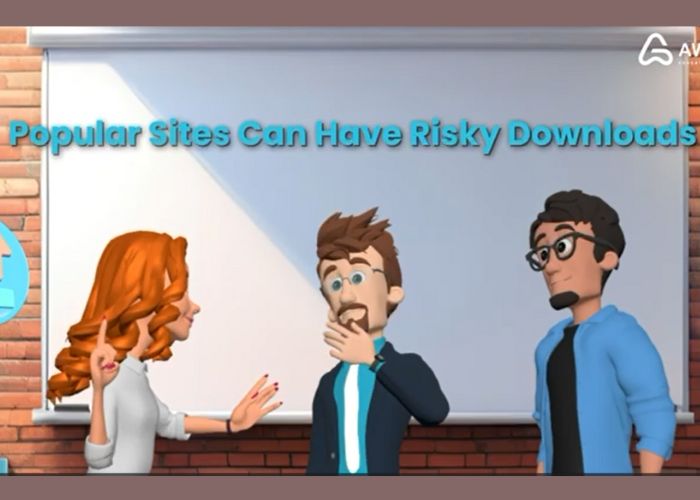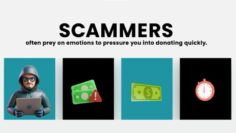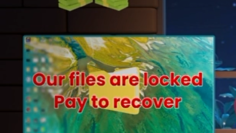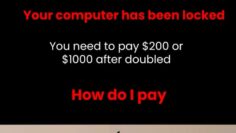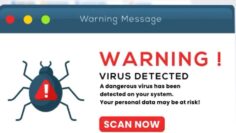Beware the Free Software Trap: Protect Your Device from Unverified Downloads
Introduction
In the digital age, free software is everywhere. Many websites promise free apps and programs that seem too good to be true. Often, the allure of saving money or accessing premium features without cost can lead users to download unverified software. However, the reality is that these free downloads may come with hidden dangers. Cybercriminals use free software as bait to distribute malware or spyware, placing your device and personal data at risk. This guide explores the free software trap, explains how unverified downloads can compromise your security, and outlines best practices to ensure your digital safety.
Understanding the Free Software Trap
The term “free software trap” refers to the practice where seemingly harmless, no-cost programs are used as vehicles to deliver malicious code. In the scenario presented, Omar downloads a free app from an unverified website. His excitement is quickly tempered by the caution of his colleagues, Adam and Sarah. Adam warns that free apps can be a conduit for malware, while Sarah emphasizes that even popular download sites might host risky software if the source is not official. This scenario highlights an important point: the cost of the software is not the only factor to consider. The source of the download and its authenticity play a critical role in determining its safety.
Cybercriminals know that users often associate “free” with good value and may not consider the potential risks involved. By disguising malware within free apps, attackers can bypass many of the security measures that protect against paid or verified software. Once installed, this malicious software can perform a range of harmful actions—from stealing sensitive data to compromising entire networks.
How Malware and Spyware Are Hidden in Free Software
Free software can be a covert method for distributing malware. Here’s how cybercriminals embed malicious code into free downloads:
- Bundled Software: A free app may include additional software that you did not intend to download. Often, these extras are hidden within the installation process, and you might unknowingly agree to install them.
- Trojanized Applications: Cybercriminals can modify legitimate software to include malicious payloads. The altered version may appear identical to the genuine program, but it secretly contains harmful code.
- Fake Apps: Some websites mimic the look and feel of reputable download sites. These fake apps can be designed to look like popular software but have been intentionally infected with malware or spyware.
- Unsecured Distribution Channels: When software is downloaded from unofficial sources, there is no guarantee of its integrity. Without the security measures employed by official app stores or reputable websites, the software can be easily compromised.
Even if a free download appears popular and is discussed widely online, it does not guarantee that the software is safe. Cybercriminals continually evolve their tactics, meaning that even well-known sites can sometimes host dangerous downloads.
Immediate Actions to Take if You Suspect a Free Software Trap
If you find yourself tempted by a free app from an unverified source or have already downloaded one, consider these immediate steps:
- Do Not Run the Software: If you haven’t yet installed or run the application, refrain from doing so. Avoid clicking “install” or “open” until you have verified the source.
- Uninstall Immediately: If you have already installed the software and become suspicious, uninstall it immediately. This action can help prevent any malicious activity from running in the background.
- Scan Your Device: Run a thorough scan using reputable antivirus or anti-malware software. Ensure that your security tools are up to date to detect the latest threats.
- Disconnect from the Internet: If you suspect that your device might be compromised, disconnect it from the network to prevent any potential data breach or further spread of the malware.
- Consult IT Professionals: When in doubt, it is always wise to consult with IT professionals or a trusted security team. They can analyze the software and advise on any necessary remedial actions.
These steps can help minimize potential damage and protect your system from malicious software that might have been installed inadvertently.
Best Practices for Avoiding the Free Software Trap
Preventing the dangers associated with free software begins with adopting a cautious and informed approach. Here are some best practices to follow:
- Download from Official Sources: Always obtain software from the official website or reputable app stores. Trusted sources typically have robust security measures and verification processes in place.
- Check Reviews and Ratings: Look for user reviews and ratings before downloading free software. While reviews are not foolproof, a lack of feedback or overwhelmingly negative comments can be a red flag.
- Verify the Website’s Security: Ensure that the website you are downloading from uses secure connections (look for HTTPS in the URL) and has a good reputation. Avoid sites with poor security practices.
- Keep Antivirus Software Updated: Regularly update your antivirus and anti-malware software to ensure it can detect and block the latest threats. An updated security suite is one of your best defenses against malware.
- Educate Yourself About Cyber Threats: Stay informed about the latest cybersecurity trends and scams. Understanding the tactics used by cybercriminals can help you avoid common pitfalls.
- Use Sandboxing Tools: If you must try a free app from a less-than-official source, consider using a sandbox environment—a secure, isolated space where the software can run without impacting your main system.
- Regular Backups: Maintain regular backups of your important data. In case malware compromises your system, having a recent backup can help you recover without significant loss.
By integrating these practices into your digital routine, you significantly reduce the likelihood of falling victim to a free software trap.
The Broader Impact of the Free Software Trap
The free software trap is not just an individual risk—it can have far-reaching consequences for organizations and communities. When malware infiltrates devices through unverified downloads, it can lead to larger security breaches, affecting networks, data integrity, and even financial stability. Companies that do not enforce strict download policies may find themselves facing expensive remediation costs and reputational damage. Additionally, a widespread infection can disrupt services and compromise sensitive information on a larger scale.
The collective responsibility to maintain digital hygiene is critical. When users are educated about the risks of free software and adopt cautious downloading habits, the overall threat landscape can be significantly reduced.
Conclusion
The allure of free software is undeniable, but it often comes with hidden risks that can jeopardize your digital security. The scenario of Omar downloading a free app from an unverified website serves as a powerful reminder that not all that glitters is gold. Even software that appears popular or is hosted on frequently used download sites can hide dangerous malware or spyware.
To protect yourself, always download software from trusted sources, verify its legitimacy through reviews and secure connections, and ensure your device is equipped with up-to-date security tools. Immediate action, such as uninstalling suspicious software and running thorough security scans, can prevent minor curiosities from turning into major security breaches.
By embracing best practices and remaining vigilant, you can navigate the digital world safely and avoid the pitfalls of the free software trap. Remember, in the realm of digital security, caution and informed decision-making are your best defenses against hidden threats.
Free software can come with hidden malware or spyware. Stick to trusted sources, scan downloads with antivirus tools, and keep your device secure.


.png)
